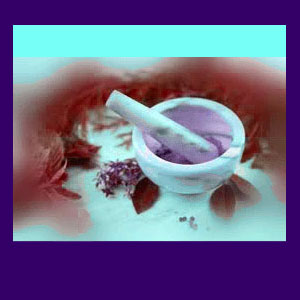
Using herbs for back pain is a holistic treatment option that might be a good addition to an organic symptom relief program. Herbs consist of all-natural plant materials or botanical extracts. These plants are grown specifically to be used as part of a back pain diet or even cultivated for inclusion in a pharmaceutical drug product.
Herbal remedies have been around for thousands of years and are some of the oldest medical treatments used by early man. Each medical herb has different symptom relieving qualities. These plant characteristics are similar to many prescription drugs, but usually less effective and not habit forming. Some of the qualities contained in back pain herbs are: antispasmodic, sedative, muscle relaxant, pain relief and anti-inflammatory.
This patient guide details many of the most commonly utilized and effectual herbal ingredients for treating back pain, neck pain and sciatica.
Types of Herbs for Back Pain
Herbs may be home-grown or purchased commercially. Whole herbs are always excellent, since they are fresh and can be integrated directly into the diet. Herbal essences can also be purchased in liquid, pill or powder form.
Some herbal nutritional supplements are not as effective as fresh botanicals, since time often reduces the efficacy of many organic ingredients. Other supplements are concentrated and can actually be more effective than fresh herbs. These supplements can be added to whole food, made into a beverage or swallowed in pill form.
Other herbs for back pain are used topically, as a cream, paste or liniment. Herbal ingredients are extremely versatile and can be quite effective for reducing some particular types of dorsalgia symptoms.
Catalog of Back Pain Herbs
The following are common herbs used to treat back pain:
Anti-inflammatory:
Saw Palmetto
Rosemary
Bromelain
Valeria
Cat’s Claw
Licorice
Grape seed extract
Muscle Relaxant:
Chamomile
Cramp Bark
Black Haw
Celery Seed
Pain Relief:
Feverfew
Burdock
Stinging Nettle
Cayenne Pepper
Willow Bark
Devil’s Claw
Ginger
Peppermint, Spearmint
Coriander
Kava Root
Mustard Seed Extract
Horsetail -also speeds healing
Angelica – also antispasmodic
Outcomes of Using Herbs for Back Pain
Herbs are all natural, but they may still be hazardous to your health. Certain substances in herbs can be poisonous if ingested or consumed in large quantities. Herbal ingredients can also have side effects, including possible interaction with pain management drugs. Make sure to consult a doctor before starting any program of using herbs for back pain relief.
Herbal remedies can be a very useful addition to a back pain treatment program. Ingredients in many herbs are beneficial to your general health. Quality herbal supplements are available at most health food stores. Be very careful when ordering herbs from an unknown source. You may not be getting what you asked for and will have no way to be sure of the product quality. Be warned of many “miracle cures” for chronic pain that come in herbal pill form. If there was a miraculous cure, we would all know about it already.
The bottom line: Make sure to follow the recommended daily consumption guidelines for any herbal supplement. Research the ingredients carefully before starting any herbal therapy program. It might be a good idea to consult with an herbalist to create a program for your particular back pain needs. Bring that program to your doctor to be checked out before starting.
Remember, that many components in powerful prescription drugs are herbal extracts. Anyone who doubts the potential effectiveness of an organic herbal therapy plan might be shocked to know that many of the ingredients in the favorite pain medications have an herbal or botanical base.
If possible, start your own herb garden. It can be set up indoors or outside. You will be assured of the quality of your herbs and will enjoying growing them yourself. I can’t help but to recommend gardening as a great activity for mind and body alike.





